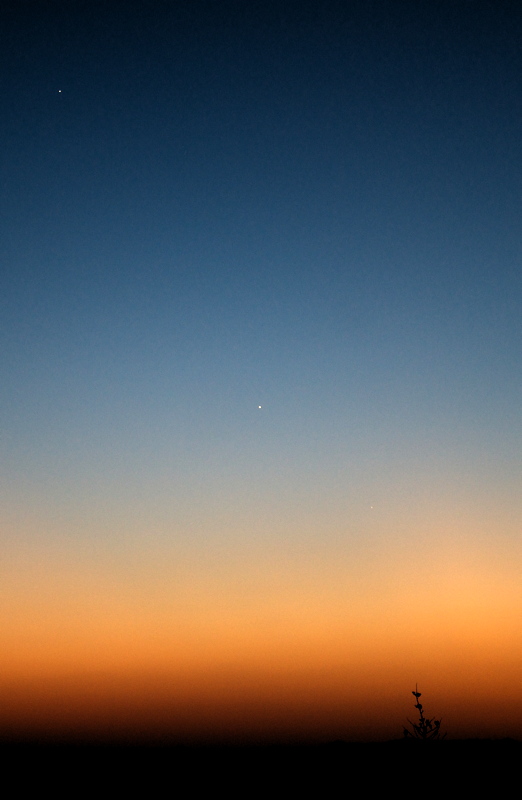
Pack Rats, Owl, Jupiter-Venus-Mercury
Posted: 21 May 2013
Alien visitor?

Nope. It is me as I prepared to spray current and removed pack rat nest locations near the observatory Monday morning, 20 May 2013. The spray is strong stuff:

Spraying took about an hour. I also released two more pack rats that had been captured overnight. That makes a total of 11 live pack rats and 2 dead ones. One of the pack rats was a young one. Momma rat didn't seem too pleased to have her kid locked in a jail! She stayed near the trap until I reached down for it.
We'll soon know if the mitigation efforts have helped to ward off Kissing Bugs.
The observatory was opened Monday, 20 May, at 1843 MST, 87°F. The sky was clear but it was breezy again this evening. At 1850 MST, viewed the waxing gibbous moon, 83X. At 1900 MST, switched to 222X; seeing was not good, but I hoped it would improve after sunset. This was planned to be a short session as I have to deal with an old computer hard disk that failed earlier on Monday.
I left the observatory at 1920 MST to photograph Jupiter, Venus, and Mercury in the western sky. At 1925 MST, about 5 minutes after sunset, I saw Venus with the naked eye. Jupiter and Mercury were visible in 7x50 binoculars. The planets were nearly in a straight line. At 1931 MST, all three planets were visible to the naked eye, although Mercury was a difficult naked eye object.
At 1941 MST, I saw an owl land in a distant tree and managed to get this photo:

This photo of the planets was taken at 1949 MST with a Nikon D7000 DSLR, f/5, 1/15sec, 52mm lens focal length, ISO 400:

All three planets are easily visible in the photo, but mouseover it if you need help locating faint Mercury. Compare this evening's photo to the one from the previous evening.
Returned to the observatory at 1959 MST and resumed lunar observing, 222X. The breeze had calmed down but seeing was still not very good. Slewed to Saturn; the seeing was so bad that Cassini Division was difficult to see at 222X. It wasn't much better at 83X. Began closing the observatory.
The observatory was closed at 2017 MST, 70°F. As I stepped outside of the observatory, I was temporarily blinded by the two exceedingly bright, horizontally aimed, unshielded floodlights at the neighbor to the north. (The lights were still on at sunrise the next morning.)
Comments are welcome; use the Comments section below, or you can Email Me. Thanks.
Cassiopeia Observatory Home Page